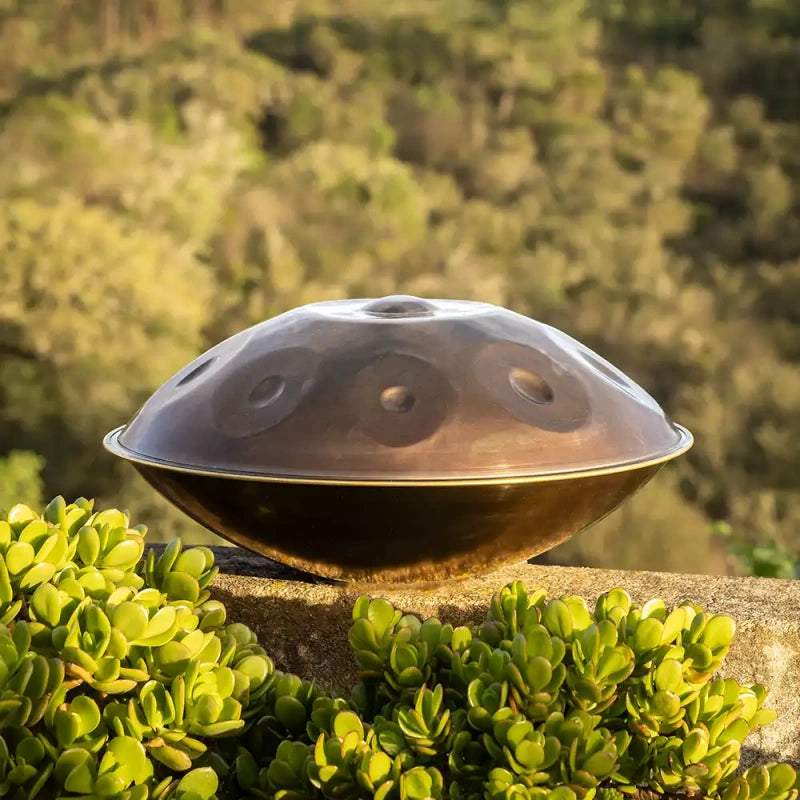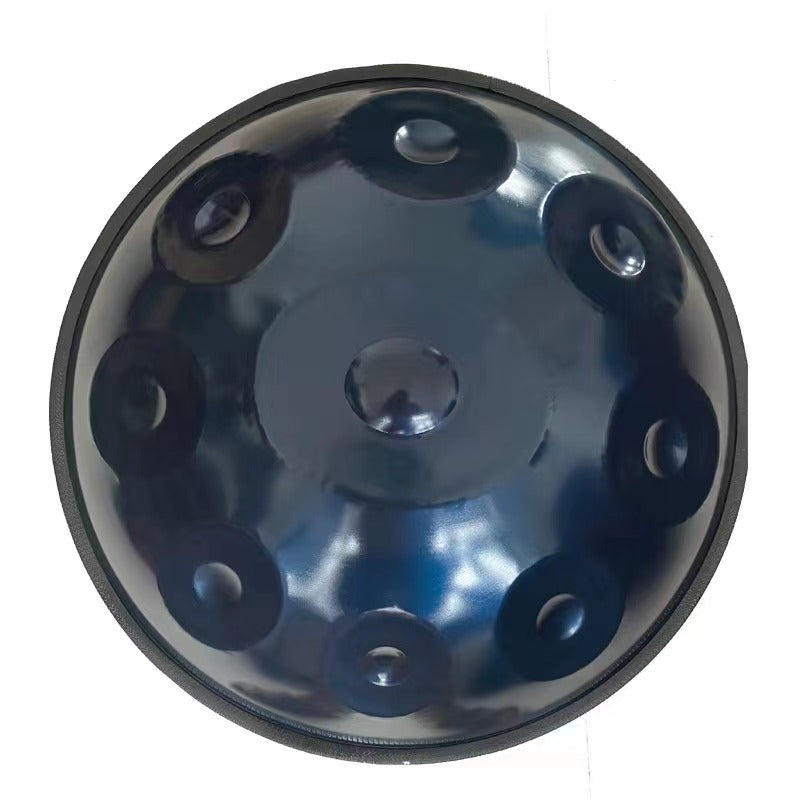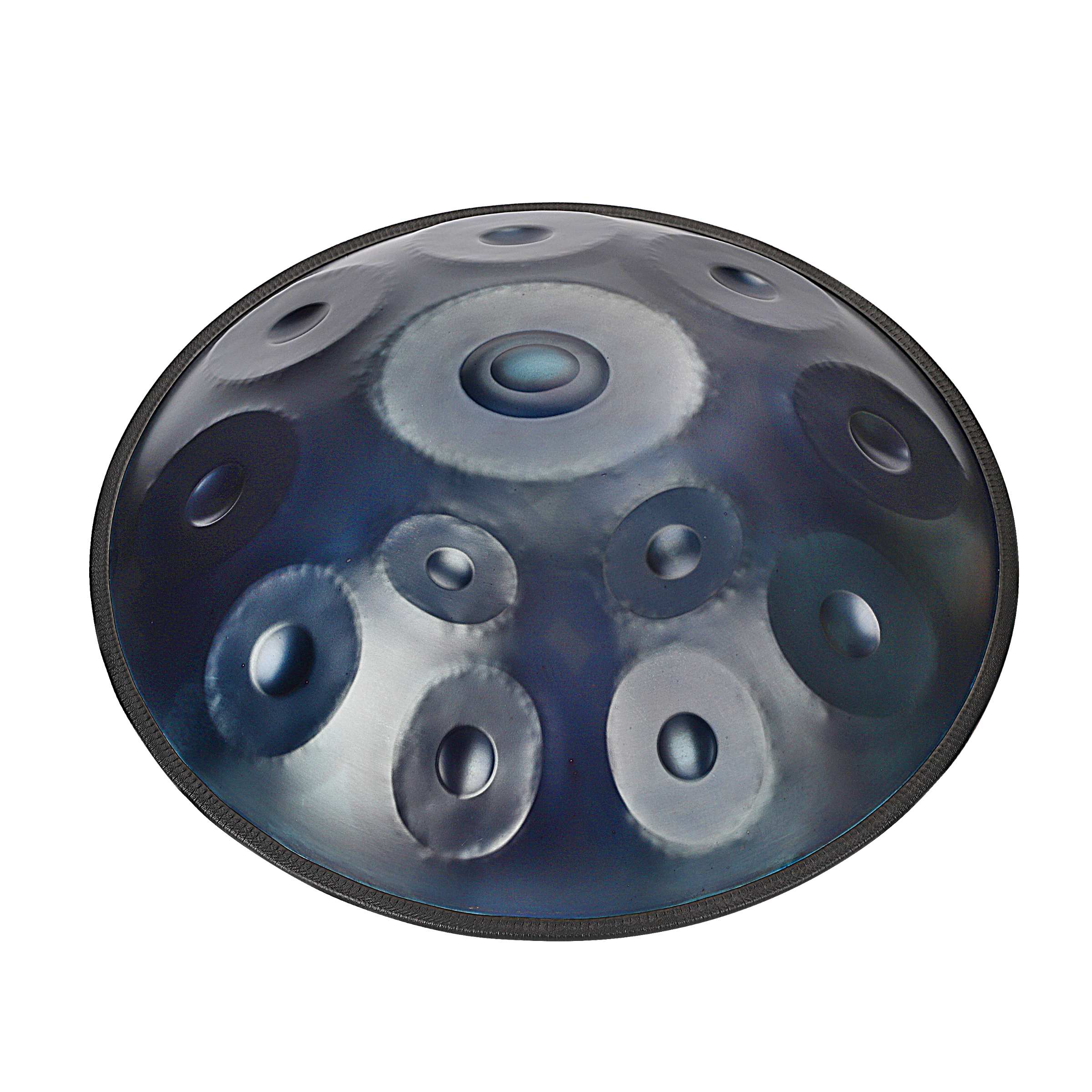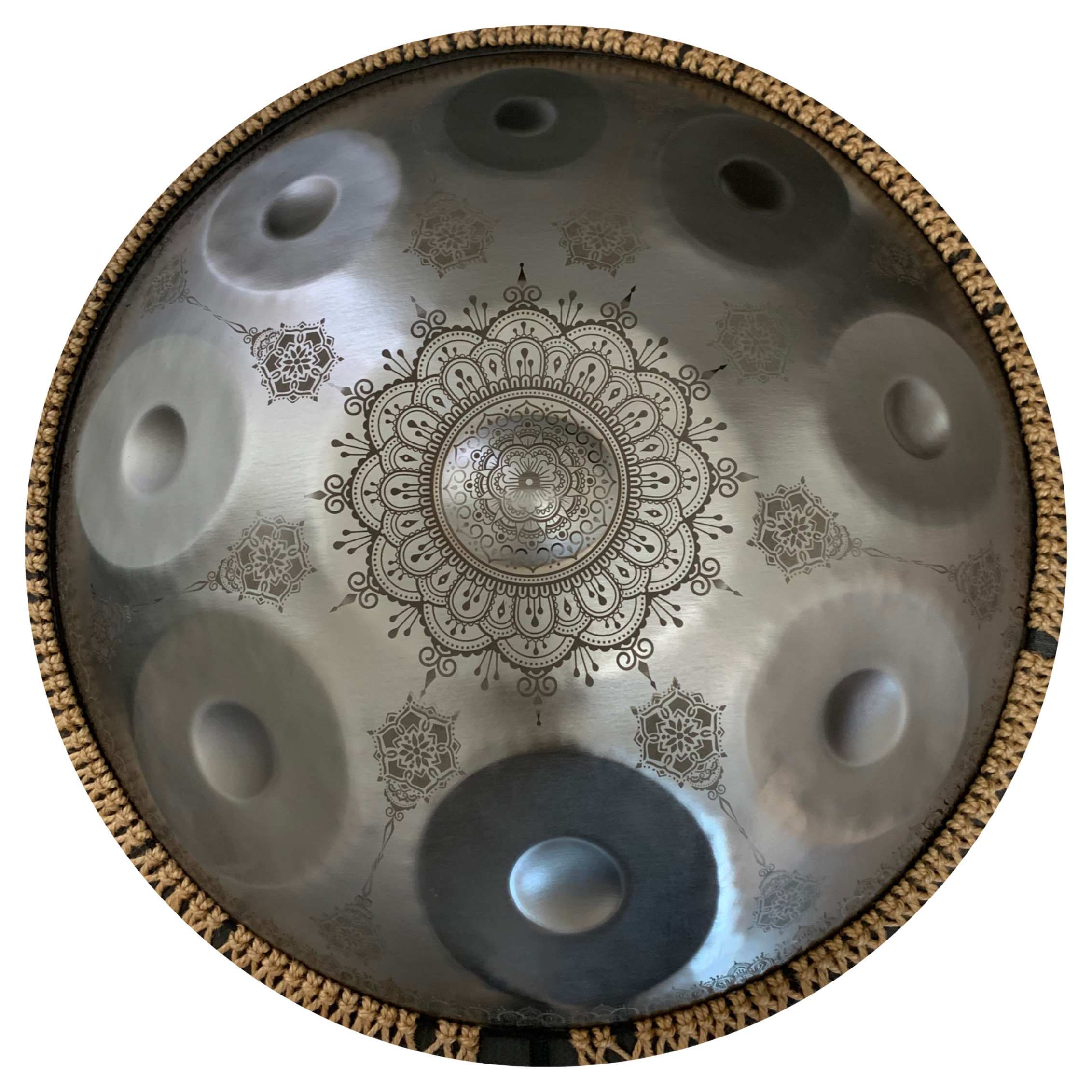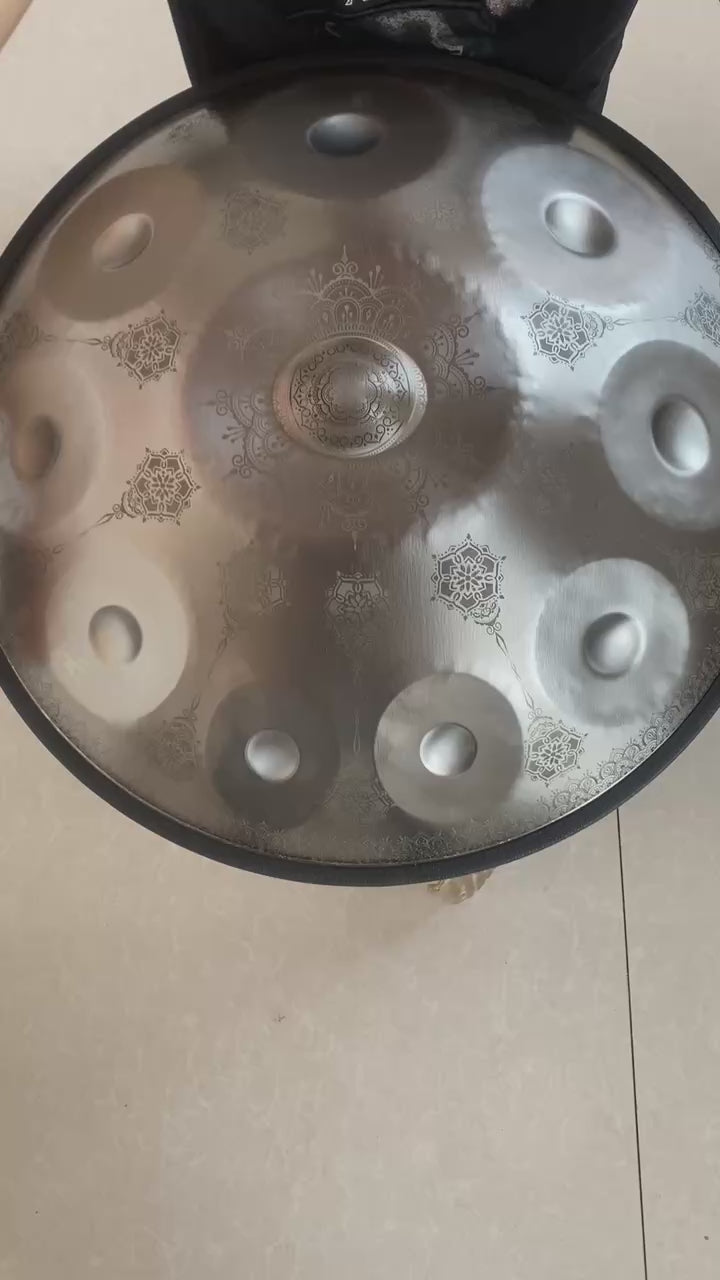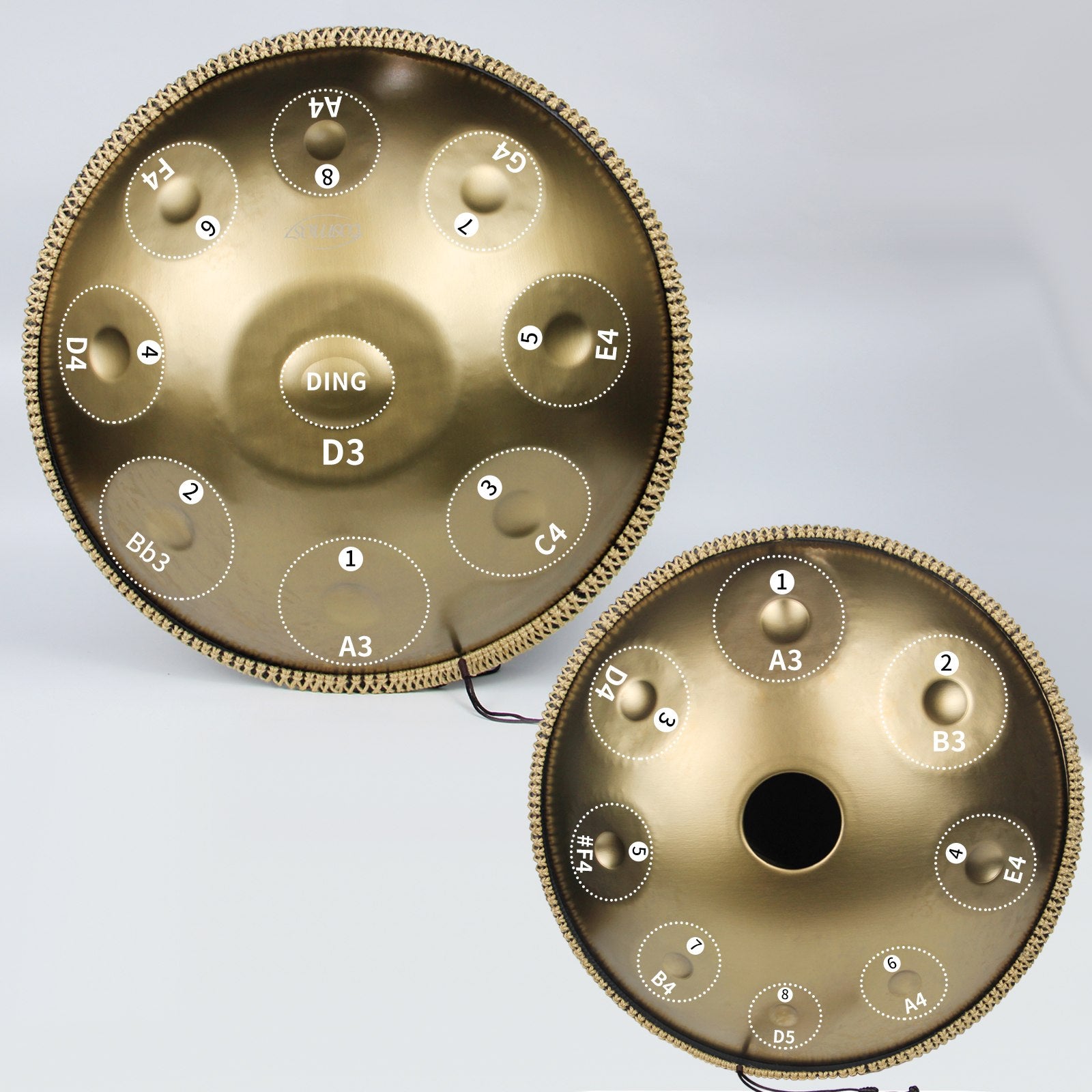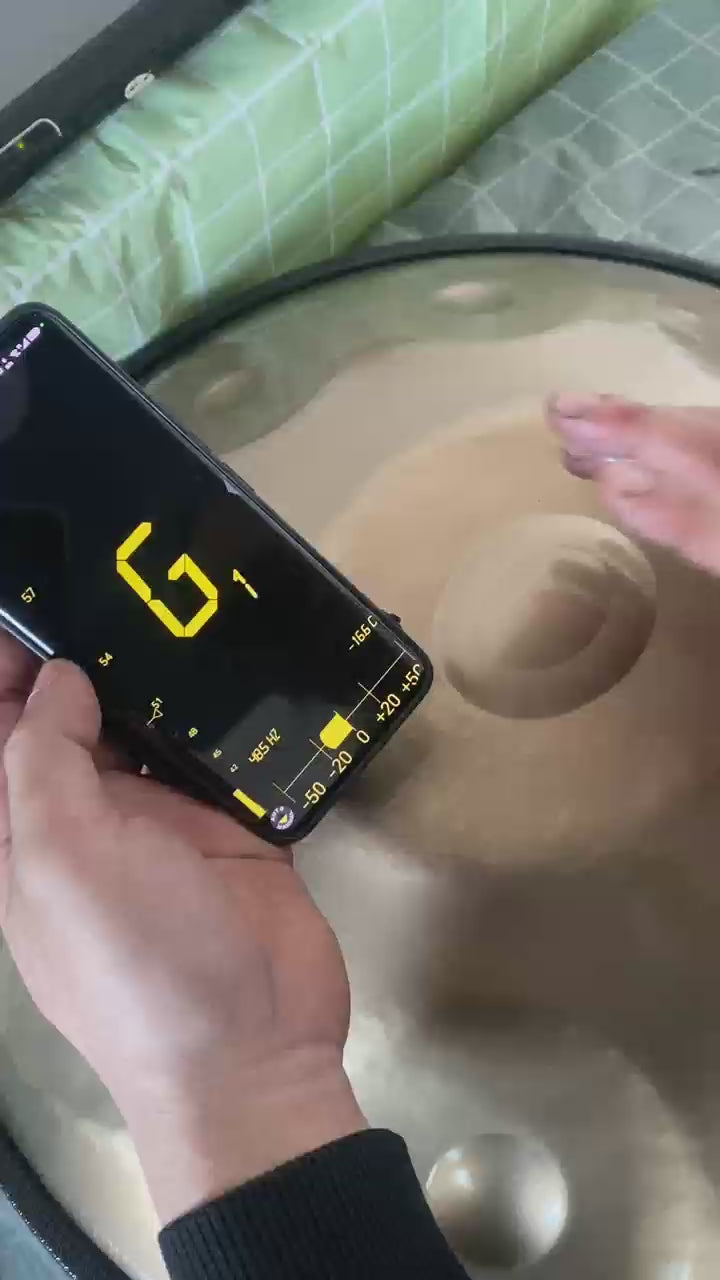Introduction
Do you wonder if you have ever heard how a handpan sounds like? Well, chances are that you probably have! The handpan drum is an instrument that exudes mysticism and engrosses the listeners with its beautiful sounds. The origin of handpan drums is the steel drum family. Allow us to give you a history lesson about this beautiful musical instrument known as the handpan, hang drum, or pantam.
What Is a Handpan, Hang Drum, or Pantam?
The names of the handpan comes from a large family of musical instruments built from steel sheets. We tune each handpan to a single scale which allows you to create beautiful music without putting in much effort; thus, making it a perfect instrument for both beginners and experienced musicians.
The Birth of the Handpan
A fun fact: the very first handpan was built by Felix Rohner and Sabina Schärer of PANArt Hangbau AG in Bern, Switzerland. Not just that! A hand percussionist, Reto Weber brought about the conversion of the steelpan into a portable and hand-playable instrument in the late 1990s. After numerous experiments, the first handpan, called the "Hang," was born. The word "Hang" comes from the Bernese German word for "hand."

Early Production and Popularity
PANArt introduced the first-generation Hang in 2001 at the Musikmesse in Frankfurt. These instruments have various sound patterns and PANArt released them from 2001 to 2005. Each Hang had eight notes arranged in a circle around a central note, called the "ding." Hang became popular when videos of the instrument started making waves on YouTube in 2005.
The Elusive Hang
As the demand for the Hang increased, obtaining one became a challenge. PANArt required potential buyers to send handwritten letters explaining their desire for the instrument. Buyers often waited months or years for a response. Despite this, the Hang's unique sound and limited availability only increased its allure. You should note that not all handpans are Hangs. Kyle Cox of Pantheon Steel coined the term ‘handpan’ to describe similar instruments.
The Steel Pan Connection
Handpan’s roots come from the steel pans of Trinidad and Tobago. Locals in Trinidad used oil drums to create musical instruments, consequently creating the steel pan. This instrument, perfected by Ellie Mannette and others, influenced the creation of the handpan.

Evolution of Tuning
The art of tuning steel and handpans has evolved over the years. Early steel pans had single fundamental frequencies, but modern instruments often include additional harmonics. The 1:2:3 frequency ratio, representing the fundamental, octave, and compound fifth, is a key aspect of high-quality handpan tuning.
Other Influences
Besides the steel pan, the handpan also draws inspiration from gongs and Gamelan instruments, known for their domed structures. PANArt incorporated these features into their designs, contributing to the handpan's distinctive sound.
Rise of New Handpan Makers
With PANArt ceasing Hang production in 2014, the handpan landscape underwent a significant transformation. PANArt put their focus on musical instruments other than the hang drum so naturally, many new handpan makers came into the industry with new designs and innovations to improve the instrument’s potential. These new makers began to push the boundaries of handpan design, tuning, and craftsmanship, leading to a renaissance in the instrument's development.
Innovations in Design
A key worthy innovation in the hang drum was the increase in the number of notes. Early handpans, including the original Hang, typically featured eight to nine notes. However, contemporary makers have experimented with adding more notes, sometimes up to fifteen or more. These additional notes have expanded the instrument's melodic and harmonic possibilities, attracting a broader audience of musicians.
New Layouts and Tuning Methods
The traditional circular layout of notes around the central "ding" has also seen creative variations. Some builders have introduced alternative layouts that cater to different playing styles and musical genres. Additionally, advancements in tuning methods have resulted in more precise and stable instruments. Modern handpan makers employ sophisticated techniques and tools to provide a richer sound with consistent tuning across its entire range.
Improved Materials and Construction
Innovation in materials has further enhanced the quality and durability of handpans. While early handpans were made from nitrided steel to prevent rust and improve sound quality, newer materials and treatments are developing. These include stainless steel and other proprietary alloys that offer better resistance to corrosion and improved acoustic properties. The construction techniques have also evolved, with some makers using advanced metalworking methods to create handpans with superior sound projection and sustain.
The Growing Community
New handpan makers brought about the growth in a supportive community of musicians, other handpan builders, and hang drum enthusiasts. The online industry started booming as well. People are teaching the handpan and sharing knowledge throughout social media and online forums. Furthermore, specific festivals and gatherings celebrating the handpan have become popular.
Handpan Terminology
You can use “handpan”, “hang drum” and “pantam” interchangeably; however, do note that each phrase means something more. Knowing the nuances surrounding the terms allows for a deeper appreciation for the instrument.
Handpan
"Handpan" is the most widely accepted and commonly used term to describe this family of instruments. Coined by Kyle Cox of Pantheon Steel, the term encompasses all hand-played, steel instruments that share the convex shape and tonal arrangement of the original Hang. It serves as a generic name, recognizing the variety of instruments produced by different makers around the world.

Hang Drum
"Hang drum" most often refers to other handpans, however, it is more accurate for the original instruments built by PANArt. It is important to make this distinction as it honors the original creators of the handpan.

Pantam
"Pantam" combines "pan" (a steel pan) and "ghatam," which is an Indian clay drum. Pantam highlights the importance of different musical traditions and their involvement in the creation of handpans. It is particularly popular in certain regions and among specific communities of players. "Pantam" underscores the instrument's global appeal and ability to transcend cultural boundaries.

Playing the Handpan
You should know that the handpan is very accessible. Many traditional musical instruments require extensive practice but that isn’t the case for the hang drum! The hang drum has a purposefully intuitive design which helps beginners, and experts create pleasing tunes. Another fun fact! All handpan notes are in a position where they will produce a musically coherent tune.
Meditative and Therapeutic Qualities
Playing a handpan is therapeutic and helps your mind relax! The act of playing the handpan can be deeply meditative, helping you to focus your mind and enter a state of relaxation. Sound healers and therapists use handpan music in their practices to help clients achieve a peaceful environment.
Conclusion
Hang Drums and Handpans have a rich history and enchanting tunes! It doesn’t matter if you call it the handpan, hang drum, or Pantam, its evolution from the steelpans in Trinidad to the hands of modern players shows its appeal.

